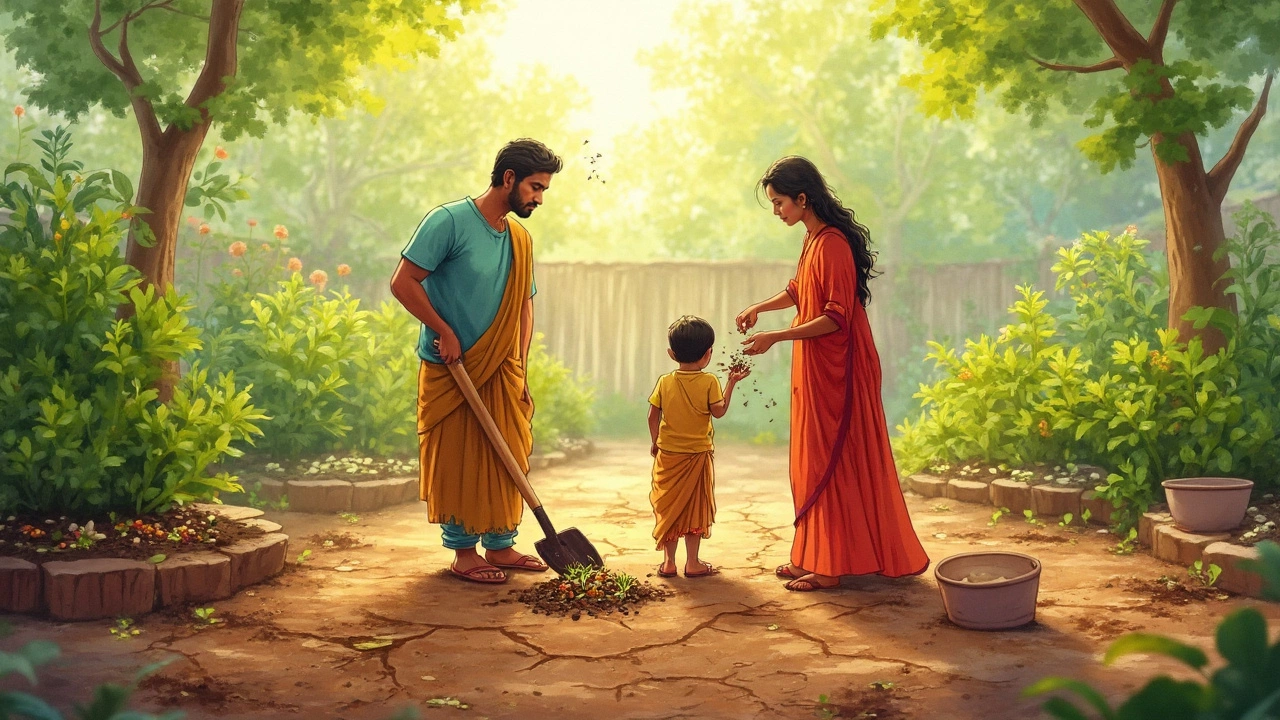Are coffee grounds good for bleeding hearts? This article digs into whether you should toss those grounds from your morning brew onto your bleeding heart plants. Get the inside scoop on what bleeding hearts need, the real deal about using coffee grounds in your garden, and clever ways to boost your soil. Discover easy composting tips, and find out what actually helps these plants thrive—without guesswork.
Compost: How to Make Rich Soil for Your Indian Garden
When you think of compost, a natural, nutrient-rich material made from decomposed organic matter that improves soil health. Also known as black gold, it’s the quiet hero behind every thriving garden in India. You don’t need fancy gear or a big yard. Even a small balcony can turn kitchen scraps into soil that makes your plants grow stronger, healthier, and more resilient to heat and monsoons.
Good compost needs four things: carbon-rich browns, dry materials like dry leaves, paper, or straw that provide structure and energy, nitrogen-rich greens, fresh scraps like vegetable peels, coffee grounds, or grass clippings that feed the microbes, oxygen, needed to keep the pile from stinking and to speed up breakdown, and moisture, just enough to feel like a damp sponge—not soggy, not dry. Get the balance right, and you’ll have dark, crumbly compost in 6 to 12 weeks. Skip the meat, dairy, or oily foods—they attract pests and slow things down. In India’s warm climate, decomposition happens faster than in colder regions, so you can often turn your pile more often without worrying about freezing.
Many gardeners in India skip compost because they think it’s messy or takes too long. But the truth? The easiest compost system is just a pile in a corner, covered with a sack. Or use a plastic bin with holes poked in the sides. Vermicomposting, where worms break down scraps, works great in apartments and needs almost no space. You’ll end up with two products: liquid fertilizer you can dilute and use on your plants, and solid compost to mix into your soil. Both make a huge difference. You’ll notice your plants need less water, resist pests better, and produce more flowers or veggies. And you’ll be doing something simple that cuts down on waste and helps the environment.
Look at the posts below. You’ll find real, tested ways to make compost at home—no jargon, no fluff. Some show you how to fix a stinky pile. Others break down the perfect mix of greens and browns. One even explains why your compost isn’t heating up. There’s advice for tiny balconies, big backyards, and everything in between. Whether you’re growing tomatoes on your terrace, herbs on your windowsill, or vegetables in a clay-heavy yard, compost is the one thing that connects all of it. It’s not magic. It’s just biology, done right.
Struggling with stubborn, lifeless soil in your yard? This guide dives straight into practical fixes for bad garden soil, including ways to spot common problems and solutions that work fast. Learn simple tricks to boost soil health, from quick fixes with kitchen scraps to what not to do when working with clay or sand. Whether your tomatoes look sad or your flowers just don’t bloom, these tips will change the game for your next planting season. Even beginners can turn a patch of poor dirt into a thriving garden with a few easy moves.

